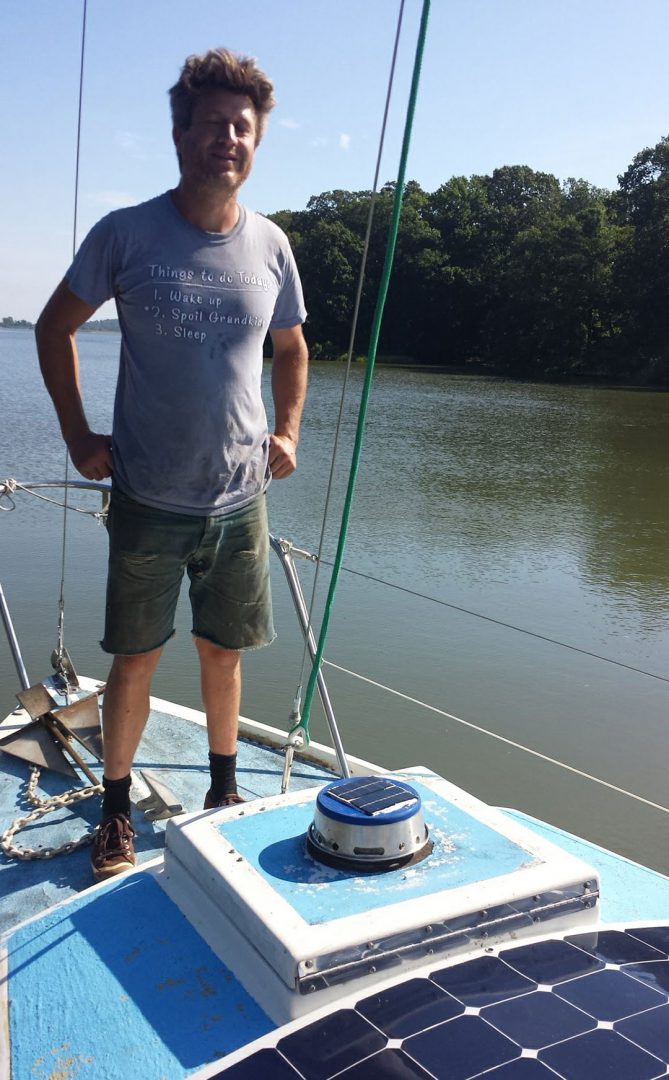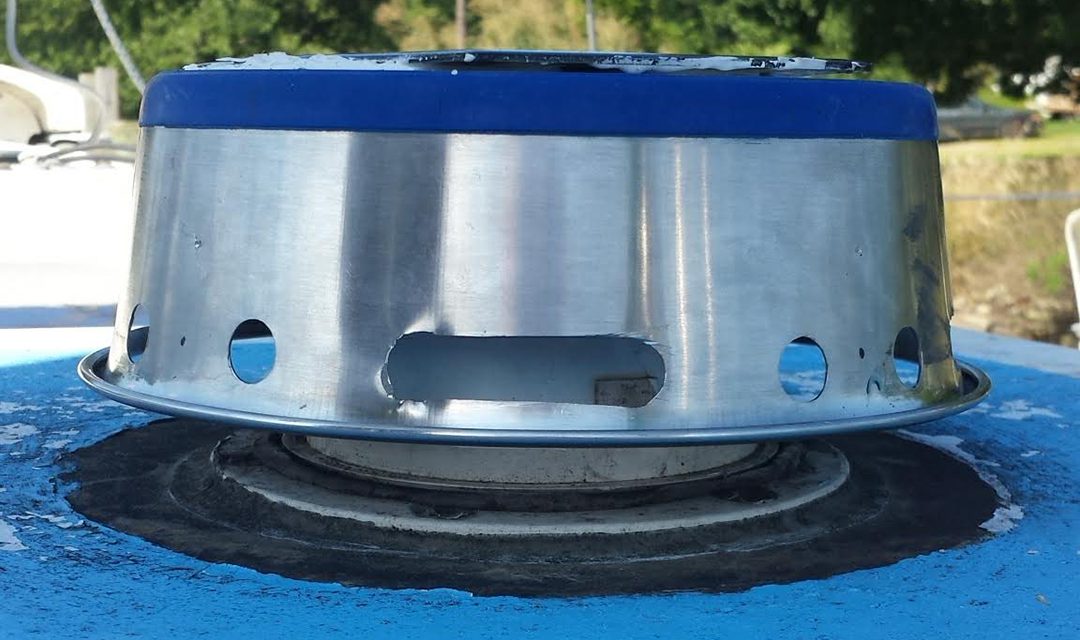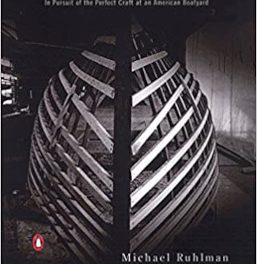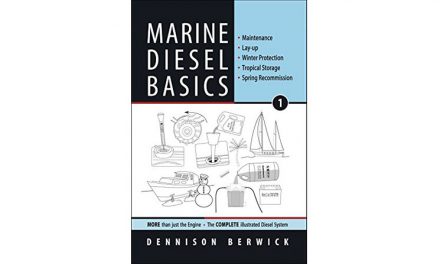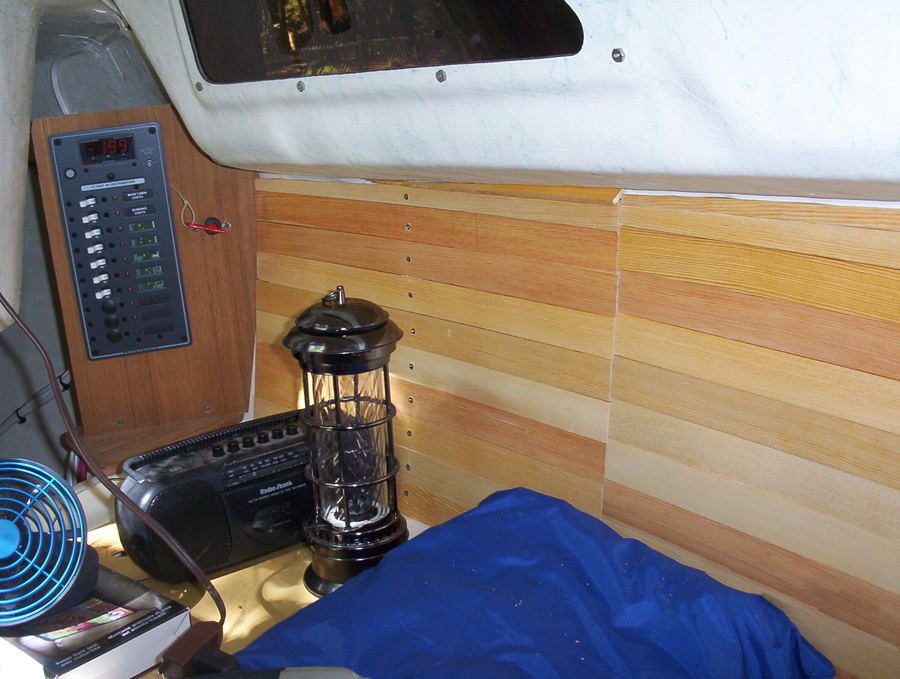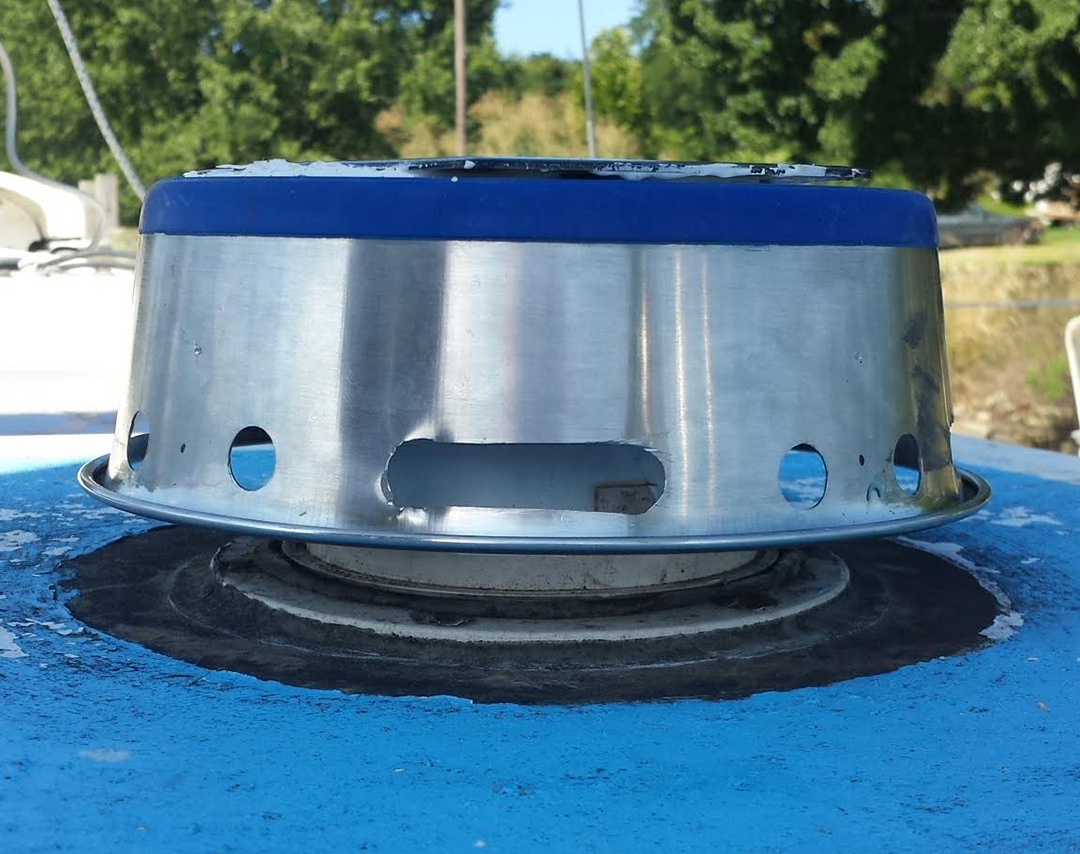
When we bought our 1976 Westerly Centaur, Breaking Wind, it came with an ancient-but-working Marinco solar-powered vent. Then, on a sporty day sailing on the Chesapeake Bay, the fan, poorly attached to the top of the forward hatch, flew off and was lost for good. After seeing the cost of a new replacement Marinco model, my dignity forced me to attempt to make my own.
A quick search on eBay led me to a pair of 6-volt solar panels that claimed to deliver 1 watt a piece. Mounted side-by-side, the two panels cover an area roughly 4 ½ inches by 4 ¾ inches. With the dimensions in hand, I went to the pet store in search of a stainless steel dog bowl with a bottom at least large enough to accommodate the panels.
Next, I bought a 4-inch computer muffin fan for about five bucks. The fan required .18 amps at 12 volts, (which my new panels could deliver) and was rated to move 61.2 cubic feet per minute (CFM). I realized that if the fan could move anything close to that amount of air, it would blow the doors of the Marinco unit it replaced (rated at less than 17 CFM)

Portions of two PVC couplings stacked to form the baffle. The notches cut in the upper portion will allow air flow and prevent water intrusion. In the background is the dog bowl with the mounting bolts attached.
There was an existing 4-inch-diameter hole cut into the hatch from the installation of the Marinco vent, so my next stop was the plumbing supply store, to find a fitting to go inside that 4-inch hole and to which I could attach the fan and bowl. A 3-inch PVC coupling has an outside diameter of 4 inches and is about 4 inches tall. Perfect, I only had to cut notches in it for air flow.
I’ll note here that I originally decided to mount the bowl directly to the surface of the hatch—hence the holes in the side of the bowl—but I later realized the Marinco vent had been elevated to feature a dorade-like baffle to prevent water intrusion, so I scrapped my plans and followed Marinco’s lead. I hope that because my PVC baffle is taller than that of the low-profile Marinco, it will do an even better job of preventing water ingress in heavy seas.
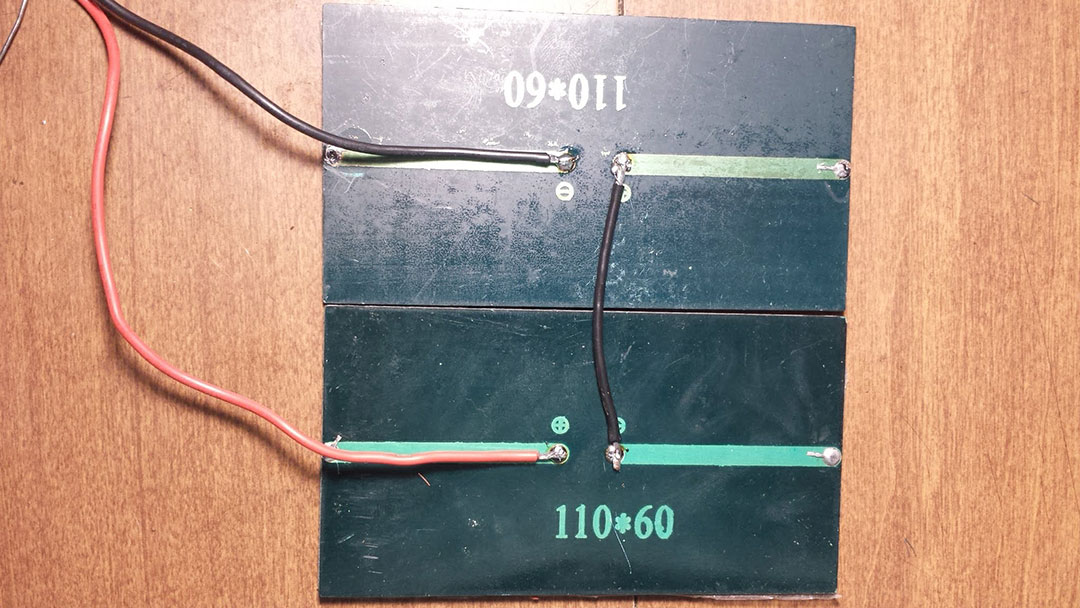
Two 6-volt panels wired in series to power the 12-volt fan.
At the scrap yard, I found a small piece of 1/8-inch-thick aluminum sheet metal. On the aluminum plate, I drew an outline of the computer fan. At the center of this outline, I placed the PVC coupling and traced the interior diameter. Within this circle, I drew two ears through which I planned to drill holes to receive long bolts I planned to protrude out the top of the inverted dog bowl. I cut the aluminum plate using a jigsaw and a drill.
Next, I glued the PVC coupling to the hatch hole using LifeSeal caulk. (And I had to add a 1-inch-tall PVC collar to the coupling to compensate for the depth of the dog bowl and to get the above-the-hatch clearance I wanted.)
In the bottom of the dog bowl, spaced apart to fit just inside the inside diameter of the PVC coupling, I drilled two holes for the ¼-inch machine screws I planned to use to mount the bowl and PVC coupling to the hatch. After inserting and securing the 5-inch screws, I glued the solar panels to the bottom of the bowl using 3M 5200 (of which I made an unfortunate runny mess, that I’ll blame on the 95-degree July weather).
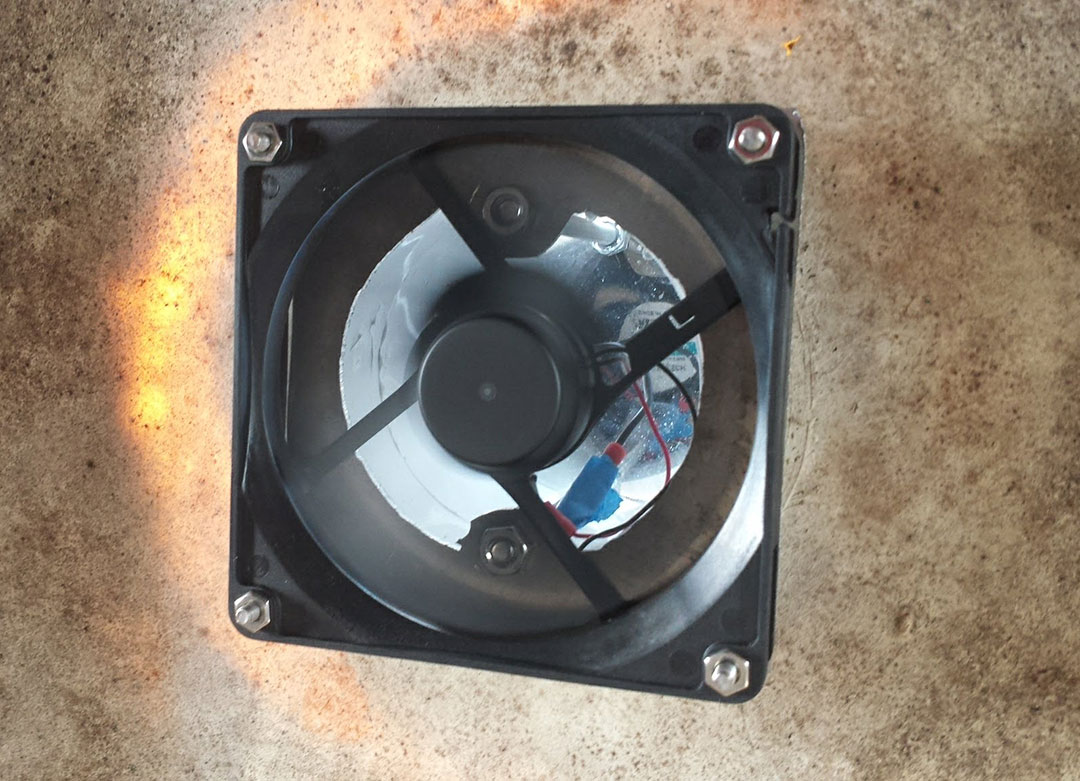
The installed, operational solar-powered vent as viewed from the underside of the hatch. The four nuts/bolts in the corners secure the fan to the aluminum plate. Looking through the spinning fan blades, the two long bolts attached to the ears cut into the aluminum plate are visible. These bolts sandwich the PVC baffle between the inverted dog bowl and the top of the hatch.
Next, I attached my fan to the aluminum plate using #10 stainless steel screws. Then I set the bowl atop the PVC coupling (the baffle), with the screws extending through the 4-inch hole in the hatch. Finally, I held the fan/aluminum plate assembly up against the inside of the hatch, lining it up so that the machine screws passed through the holes in the ears on the aluminum plate, and tightened nuts on the ends. I wired the panels to the fan using spade connectors for easy disassembly should the fan not hold up in the marine environment.
I’m pleased with my solar vent. It quietly moves a lot of air and doesn’t let any water down below. In hindsight, I would have used a smaller muffin fan given the final inner diameter of the hatch vent. I’m considering modifying my vent to include battery storage for day and night operation, using a small bank of rechargeable batteries and a simple charge circuit.
All told, I spent about $35 on this vent, about $145 less than the cost of a manufactured vent. It may not be as pretty, but my vent performs better and heck, she’s an old boat.
